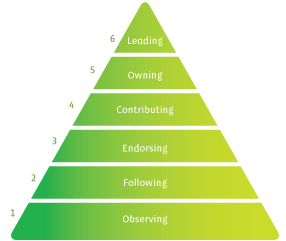Today’s guest post originally appeared on VolunteerMatch’s Engaging Volunteers blog site on January 11, 2012. The original post was written  by Shari Ilsen is the Online Communications Manager at VolunteerMatch.
by Shari Ilsen is the Online Communications Manager at VolunteerMatch.
Slacktivism used to be a dirty word. It used to stand for actions people take when they don’t really care, when they don’t plan on giving money, when they are just taking a break from watching Hulu and stalking their exes on Facebook.
 Nowadays slacktivism often plays a key role in outreach campaigns that nonprofits run to raise awareness and support for causes (think “Like this page and Corporation A will donate a dollar” type of campaigns).
Nowadays slacktivism often plays a key role in outreach campaigns that nonprofits run to raise awareness and support for causes (think “Like this page and Corporation A will donate a dollar” type of campaigns).
This link between slacktivism and nonprofits is a good thing! As it turns out, slacktivism is an important step in engaging people more deeply in a cause.
In her article “Why Slacktivism is Underrated,” Katya Andresen of Network for Good presents the findings of the Dynamics of Cause Engagement study by Georgetown University’s Center for Social Impact Communication and Ogilvy Worldwide. The study shows that slacktivists are in fact more likely to take meaningful actions in support of a cause.
They are just as likely to donate, twice as likely to volunteer, and twice as likely to participate in offline events like charity walks. Slacktivists are also three times as likely to solicit others for donations on behalf of a cause, and more than four times as likely to encourage others to sign petitions and contact political representatives.
Clearly, engagement is a ladder, and slacktivism is the first rung. It’s a way to start people off with small actions, eventually leading them up the ladder to greater involvement with your organization. With proper guidance, slacktivists can become donors, volunteers, and even leaders of organizations and initiatives.
Here are some examples of common slacktivist actions for social good:
- People like a cause on Facebook to trigger donations from a company to a cause. (For tips on using Facebook for cause marketing, check out this Cause Marketing Forum white paper.)
- People put a “Twibbon” on their Twitter avatars to show support and raise awareness for a cause.
- Offline, people wear free colored ribbons, pins and bumper stickers on their cars in support of a cause.
- Consumers buy a product from a specific company and the purchase triggers a donation from the company to a specific cause. (Examples of this include , Tide Loads of Hope and the Dawn Saves Wildlife campaign.)
So you’ve engaged all these consumers with your cause. Great job! Now what?
You can really amplify the impact of your campaign by bringing these newfound slacktivists to the next level of engagement.
For people who liked you on Facebook, engage them in running their own mini campaign using or some other application. They can involve their network of friends and family in collecting donations and raising awareness. And people who Twibboned their avatar are probably Twitter junkies, so invite them to participate in a Tweetup event that you’re hosting, or ask them to donate their tweets using a service like Help Attack.
Without the all-seeing eyes of the Internet, it’s much harder to track people who wear your ribbons and pins or buy cause-related products. But if you are able to reach out to those people who engaged offline, this is an important time to educate them further about the cause.
Let people know how they can become more involved by living greener, eating healthier, contacting your organization, volunteering, donating, spreading the word… After all, if you don’t teach them how to help, they never will.
So when you reach out to people, whether online or off, recognize the value of what you’re doing and be proud of engaging so many slacktivists – and potential future activists – in your important issue.
But don’t forget to ask yourself: Now what?



